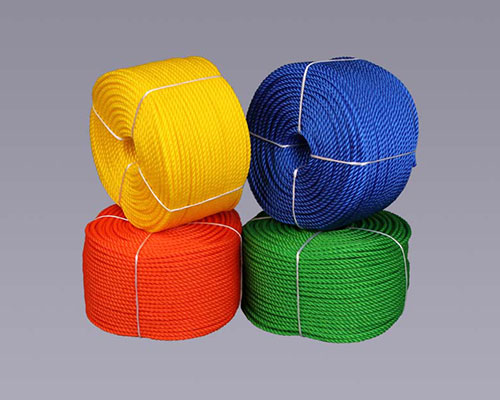Plastic has been around for well over half a century now, and in that time it has grown to become an indispensable component of our day-to-day lives. Surprisingly, however, we are only now becoming aware of the catastrophic long-term consequences of our dependency on plastic items at this point in time. Technological and scientific advancement has enabled mankind to make a plastic rope that is not only long-lasting but also very tight and highly resistant to a variety of elements. As a result, you do not need to search very hard to obtain a rope that is both useful and economical and that satisfies your requirements. If you need any more information, please keep reading the article below:
What is Plastic Rope?
The plastic rope is a connecting component that is used for numerous purposes, including lanyards, horizontal and vertical lifelines, positioning lanyards, pulley systems, and certain special-order, self-retracting lifelines. There are a wide variety of dynamic ropes, some of which are used for rock climbing, some for ice climbing, and yet others for mountaineering and industrial purposes. There are single ropes, half ropes, and twins, and then there is a tiny set of ropes that we would define as hill walking safety ropes. These are the broad categories that are available.
The process begins with the extrusion of plastic granules, followed by the production of a monofilament by the die head, which is followed by drawing the monofilament in a water bath, drying it with hot air, and finally stretching it. Plastic rope manufacturers have rapidly established themselves as prominent and reputable producer, sourcing agency, and supplier of plastic rope. This company also specializes in the production of plastic rope. The items are of great quality and are delivered on schedule. Because plastic rope has a high thickness, in addition to its great strength and durability, it also has a high level of durability.
Uses and Features
The ability to withstand pressure is the most crucial quality to look for in plastic rope since they are used to sustain bridges. These ropes are resistant to the corrosive effects of wet conditions. One further advantageous quality is that they are not susceptible to damage from mold, mildew, or UV radiation, which enables them to be helpful in environments that are exposed to the elements. Because heat will cause these ropes to melt, synthetic ropes do not work well when subjected to high temperatures. Due to the manufacturing process, they produce toxic by-products that are then released into the atmosphere, hence they are not safe for the environment. They are powerful, and it is simple to put that strength to use by lifting or pulling with them.
To make good use of plastic rope, Plastic rope manufacturers have added dyestuffs and black Carbon to polypropylene rope in order to provide it UV resistance. This is done in order to protect the rope from the potentially damaging effects of ultraviolet light.
- A bundle of fibers, threads, or wires that have been twisted together forms rope. Why not simply use a single strand that is much thicker? Despite the fact that a single strand ought to have the same level of strength as a rope with the exact same cross-sectional area, a rope is sometimes a more effective choice for a number of reasons.
- The rope is not damaged even if a single fiber breaks, in a contrast to a rope constructed of a single huge fiber, which would fail in a terrible manner.
- When constructed from the same material, thinner sheets of plastic often have more strength than thicker sheets. Glass fibers are a great example of a kind of fiber that retains its strength under tension even when it is thin. This is because it is very improbable that glass fibers would have a strength-limiting flaw.
- Drawn plastic rope has far higher mechanical qualities than polymer goods created by standard polymer processing, however, the such rope can only be manufactured in very tiny diameters because of the way the rope is drawn.
- A multi-stranded rope is more flexible than a single strand of the same diameter. For instance, a multi-stranded copper 13A cable is far simpler to bend than a single strand of copper wire of the same diameter that is used in ring-main cables.
Also Read:- Providing The Best Home Cleaning Services In El Paso!




